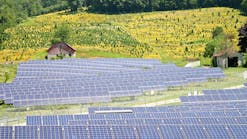Holu Hou installing Energy Storage & Solar PV at Oahu Military Residential Development
U.S.-based Holu Hou Energy (HHE) has received a contract to install its HoluPower energy storage and solar photovoltaic (PV) systems on homes at real estate firm Lendlease’s Island Palm Communities (IPC) development in Oahu, Hawaii.
IPC is a 50-year partnership between Lendlease and the U.S. Army, and is the largest residential privatized project awarded by the Army. Located on seven Army Installations on Oahu, IPC is made up of 12 communities and 42 neighborhoods.
HHE says it will install its EnergyCluster, which connects multiple residential units in an energy network or “cluster”, at IPC. This setup enables surplus solar power generated by any unit’s system within the network to be shared in real-time with other units that require more power than their solar panels can produce.
This way, the optimized PV and energy storage systems can fulfil 75-80 percent or even more of the energy requirements of all residents, without exporting any excess power to the utility grid, the company adds.
Each unit will have 10-kW of PV and 25k-Wh of energy storage, with six residences typically connected in an HHE EnergyShare network. Construction is expected to begin this summer, with the first installations at the Aliamanu Military Reservation near Honolulu.
No Place like Hawaii: Related stories in EnergyTech
Clearway Energy completes Solar-Storage in Oahu
Ameresco modernizing Private Housing Energy Efficiency at Joint Base Pearl Harbor-Hickham
See our newest ENL for stories on Energy Transition moves by the C&I Customers
Lendlease and HHE initiated their planning process in 2021, which eventually led to the construction of a pilot project in May 2022. Since its completion, HHE says the pilot has yielded exceptional results across six residential units. On average, approximately one-third of the electricity generated is shared with other units in the “cluster”, resolving issues related to vacancy and resident load variability.
The savings achieved through the deployment of HHE’s systems at IPC will be reinvested to enhance the housing and amenities Lendlease provides to military families on the installation. Furthermore, residents will now have access to a dependable backup power source that can be utilized during grid outage events. These systems are also expected to alleviate the load burden on the Oahu electric grid, thereby improving overall stability, HHE says.
Lendlease is a global real estate and investment group with operations in Australia, Asia, Europe and the Americas. The group manages almost 8,000 homes for the U.S. Army on Oahu.
The IPC Development is structured around numerous decarbonization and energy efficiency initiatives. Those include HVAC upgrades at more than 1,700 legacy homes and in 3,300 new homes, as well as LED lighting installation and distributed energy resources.





